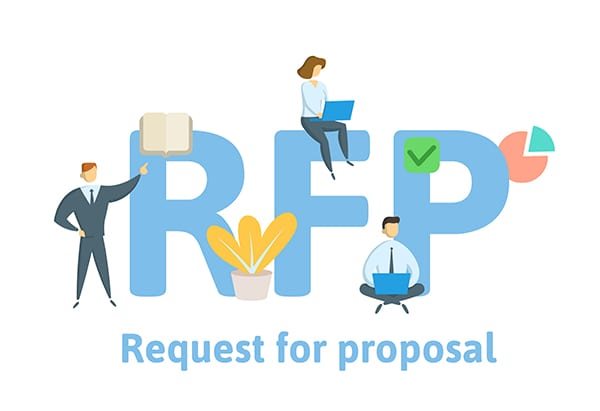
Yesterday, I attended a seminar from the Vermont / New Hampshire Marketing Group (VTNHMG) called ‘Who is Looking Out for Your Interests?’. The day was filled with valuable content from Amy Africa, Kevin Hillstrom, and Bill LaPierre. The day was described as ‘an in-depth one-day seminar for catalog and eCommerce companies on how to separate fact from fiction for profitable growth.’
Overall there was one clear message – if you want to win in the future, you need to be willing to try new things and do things differently than you are doing today. I think this is true in any aspect of a business, if we want to grow (or stay alive in many cases) we need to be willing to change.
I walked away with a renewed focus on 5 key areas that I believe are critical for future success in eCommerce.
1. Share Your Customer’s Dream
People need a reason to buy from you and if the only reason is your price, you are in trouble. Someone else can easily offer a lower price.
What is the dream your customers have, that they can realize after working with you?
The only way you can win in this competitive online marketplace is to enable your customers to see the future state of their realized dream on your website and to share how you are uniquely equipped to get them there.
2. Personalization, Personalization, Personalization
When discussing email messaging, Amy Africa shared, “If you personalize your email enough, you don’t need an offer.” Yes. I know that to be true. How do I know? Because it works for me. If someone offers me what I need when I need it, I want to click on it. We all do.
This is true everywhere - in emails, with our website content, and in every way we communicate with people around us.
At one point earlier in the day, Kevin Hillstrom shared from his experience that many promotions e-retailers are offering will increase a customer's spend during a specific period of time but do not increase that customers overall spend over a year. Typically the measurement of the success of the promotions is flawed. We stop measuring when the promotion ends and we do not take into account the average customers spend with us without a promotion. If promotions aren’t the key to increasing sales, what is? Personalization.
We can effectively use personalization by discovering the answer to these types of questions:
- Where are my site visitors in their buying cycle?
- What products are of most interest to them?
- What problem are they trying to solve?
After we ask these types of questions, we can look for ways to gain the answers to the data and information we have available. Then we test out personalizing messages to our prospective customers. The more we do this, the more valuable we will be to our customers and the more loyal they will be to us.
3. Improve Your Internal Site Search
We often measure the success of our search based on if our site search is returning results for a given keyword. Results are not an indicator of success, the right results are. We need to be extremely confident that the top result returned in the search is the thing our visitor is looking for. Visitors don’t want to look through pages of results. They want to get quickly to what they are looking for. Amy shared that 85% of a visitors attention is the top result returned. To have the top result be the product that you are confident your customers want, you need a way of prioritizing the products returned for specific common searches. The great news is that is possible (probably a topic for a different blog post).
Improving the quality of our search is something that will serve our visitors better and help them find what they want. Amazon can return thousands of results, but what our customers want is really just one. If we can do a better job of getting our visitors to what they want, we can win their business and maintain that relationship.
The future of eCommerce search includes some interesting developments including voice search, visual search, and video search. The applications for B2B are quite interesting. What if you could enable a customer to quickly find a replacement part using a visual search. What if your customer could take a picture with their phone, or speak what they need into their phone, and you could get them to exactly what they need on your website?
4. Mobile – More than Responsive Design
Amy and Kevin agreed that mobile commerce is not the same thing as eCommerce. While I would say it a bit differently, I agree with their point. When we treat mobile commerce as a feature that we add to our eCommerce sites, we are minimizing the differences that exist for mobile, tablet and desktop users. The way a mobile user shops is completely different than the way a desktop user shops. Amy points out that even the large eCommerce players are not doing a great job with mobile and it represents an opportunity for businesses to stand out with mobile commerce experiences that are fast and easy to use.
Amy shared a few areas we need to pay close attention to:
- Speed: Load time is absolutely critical. The majority of decisions users make on mobile are made in less than 1.5 seconds, typically before your page is finished loading.
- Navigation: This should include a separate navigation designed specifically for mobile users. Think through what information is of the most relevance to your mobile users and make it easy for them to get to quickly.
- Search: Search needs to be great (see #3) because mobile users are more dependent on your search than desktop users.
While a responsive design is better than not providing any mobile support on your website, it is just the beginning of what needs to happen to reach mobile users. Future improvements should include dynamically serving content to improve speed, provide a separate navigation, a customized search for mobile, and usability testing and design of the checkout process to make it faster and easier for mobile users. This requires additional investments in UX design and site development. If you want to lead in the market, invest more in your mobile experience. The growth of mobile is not going away. Companies that choose to invest in a great mobile experience will reap the benefits.
5. Google Analytics is Not a Complete Picture
Many times we focus on increasing conversion rates based on the data we are looking at in Google Analytics. (I am guilty!) This has its place, but we need to recognize how the data is limited. If the same customer comes to our site multiple times over the course of a month, but only purchases once, we see all of those customer visits as separate visits. Google Analytics doesn’t show us a long-term picture of prospects and customers over time. If we optimize for a better conversion in the short-term, we can do things that damage our customer relationship over the long-term.
Kevin did a great job of sharing that we always need to question what our data is actually telling us. He had multiple examples of where people were drawing false conclusions from data because they didn’t understand the limitations of the data collected and how it skewed the results.
That is Just the Start
Those takeaways represent the tip of the iceberg from my pages of notes, but I think they represent a great starting point. Overall, I am left with this – we need to be willing to try new things. We need to test and measure and our focus should always be on serving our customer better. If we get that right, the rest will follow.
If you are interested in taking the next steps with regards to your eCommerce presence, we would love to talk with you about how we can help you get there. Contact us for a free consultation or call us at 414-425-4069 x3.



